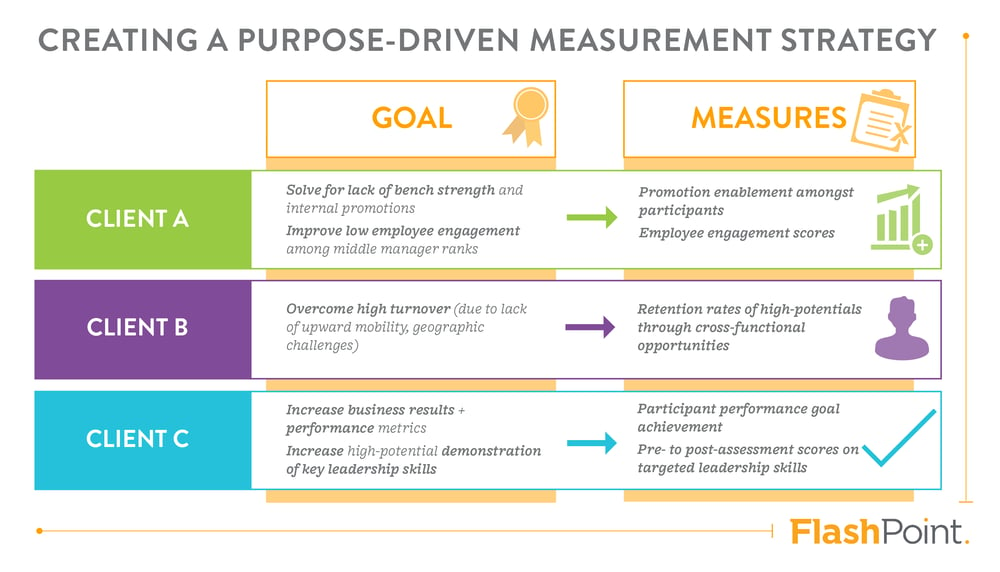The DiSC Profile, Explained: How Two Identical DiSC Styles Can be Unique








If there's one thing we know about measurement, it's that you must start with a clear purpose and then define what outcomes matter most.
For example, you've likely heard many of these common quotes:
The most important element of good measurement starts well before you measure anything. In our practice at FlashPoint, we first start every project by asking: “What is the investment in this program going to solve for in the business?” Then, we focus on how to collect data that tells the right story to justify that investment.
Too often though, we see one of a few situations:
These examples demonstrate why it’s believable that only 40 percent of L&D practitioners feel they capture their programs’ effectiveness (Harvard Business Publishing, 2016).
From our perspective, measurement can be a bit of a rabbit hole. It’s tempting to spend far more time and effort measuring things that aren’t worth the time or energy to measure because in the end some measures don’t convey the impact or value of the program very well.
But as Steven Covey said, it’s about “beginning with the end in mind.”
At FlashPoint, we have a six-part measurement framework that we use as a tool for client conversations. It helps us understand what’s important to clients and answer the question “What does success look like?” Each measurement plan comes out differently based on leader level, program length, investment, senior leader involvement, and more.
You can see below a few examples of how we began with a clear program purpose and that purpose led to a different set of measures that we tracked and analyzed.

Each of these programs, from Client A to Client C, had a different genesis or business challenge the program was attempting to solve for, though they were developed for similar high-potential audiences. The purposes of these programs set the stage for what metrics we collected and reported back to the business.
Measurement can be an overwhelming topic to consider. So don’t get overwhelmed. When it comes down to it, the first step is to be better than the majority of organizations who don’t measure anything! Do keep in mind the advice above to avoid measuring everything though—pick and choose thoughtfully, then follow through.
Related pieces on best-practices for designing leadership development programs:






We're excited to partner with you to empower your leaders. Let us
know how we can be of service!